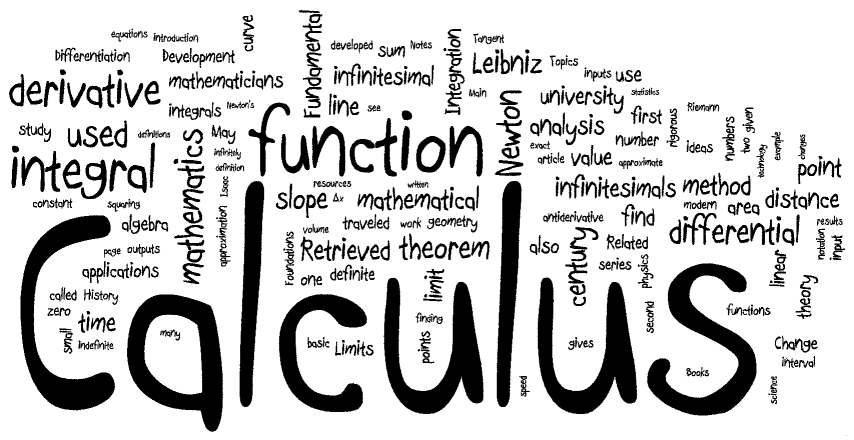How learning calculus from YouTube can work for you – By Frédéric Mynard


Are you interested in calculus? In this interview calculus expert Frédéric Mynard explains how to make your calculus self-study most effective, how “word-problems” can be solved and why a calculus flipped classroom is a great way to gain a deeper calculus understanding. Take a look!
1. Your free textbook “A YouTube Calculus Workbook” was just published on bookboon.com. What was your idea behind the book?
I had been asked a few years back if I would be interested in writing a calculus book. At the time, my reaction was that there already are many calculus books out there, all extremely similar to one another, and that I have no interest in producing yet another copycat.
In contrast, I was happy to devote time to this project because this book is different. It is not another textbook, but rather a guide providing structure for self-study from instructional videos.
Two years ago, I developed and taught a fully online calculus I course administered through one of the mainstream Learning Management platforms (D2L). To this end, I created a large number of instructional videos covering the entire material of the course. This was supplemented by other documents and activities in the course.
I received very positive feedback from students on the videos and thus decided to make them freely available on YouTube (http://www.YouTube.com/user/calculusvideos), hoping that they might be useful for self-study, or as supplemental material in a formal course. I was hoping that one may learn calculus from this. But I soon realized that a YouTube playlist, however well-organized, is not structured enough for an interested person to learn calculus on their own.
He/she would need notes summarizing what was covered, figures, definitions and theorems that can be referenced quickly, and of course, more exercises, with solutions. This is what this book provides, but it is meant to be used in conjunction with the videos.
2. Why have you chosen bookboon.com’s concept of free textbooks to publish your book?
I didn’t even know of bookboon.com when Sophie Tergeist of Bookboon approached me about possible book projects, right at the time where I was starting to think that I should put together extensive notes to accompany the videos.
From the start, I liked the idea of a free textbook. I always felt that the price of most textbooks was an outrage, and something we should not impose on our students. So, Sophie’s solicitation came at the right time, and bookboon.com appeared to me as a natural venue for this project. I made the videos available online, and it made sense to have the corresponding book freely available as well.
3. What made you choose the videos mentioned in your book? Did you follow certain guidelines?
As I said, I have developed these videos to cover an online calculus I course, at the university level. They are not, like many instructional videos, recorded in-class lectures. Neither are they a computerized version of writing on a board, like the popular Khan Academy videos. For me, there would have been no point in having videos that bring nothing more than what I would do on the board in class. I believe that, by incorporating animations that can be illuminating at times, they are a good example of how it is possible to take advantage of the dynamic capabilities of a computerized presentation.
I wanted the videos to cover all the material I would cover in class, but with things more readable than they would be on my board, and with dynamic illustrations that really make a difference.
4. In your experience, when learning calculus, what problems do students struggle with most?
Many students have difficulties with “word-problems” in which a particular situation is described and must be mathematically interpreted before starting calculations, like related rates problems and optimization problems. I think in some of these cases, the illustrative power of an animated presentation can be very helpful to students. Not surprisingly, one of the most viewed of these videos treats a related rates problem (M6-6:related rates: moving shadow)
5. Do you have a favorite method for students to improve their understanding of calculus?
There is no silver bullet, and, of course, what works well for one student may not be the best approach for another. You can do your best to explain the concepts, the operational processes, and show several examples. Yet, at the end of the day, you cannot learn on behalf of the student, and the real key to student learning is the time the student devotes to studying and even more importantly, to practicing on a variety of problems.
One possible use of this book and videos is for a calculus flipped classroom. In this model, students are assigned videos to watch before class and this way, class time can be devoted to questions and working out more examples. The amount of practice problems worked out by a calculus student is a big indicator of how well (s)he will learn, and this is a way to try to maximize it.
6. While learning calculus, how important is visual help through videos?
We all heard that “a picture is worth a thousand words” and this is often particularly true in mathematics, and in calculus in particular. Calculus is, in a way, the study of change. Thus, it is not surprising that the possibility of using animated illustrations can be particularly helpful.
Take for instance the connection between Rolle’s Theorem and the Mean Value Theorem. There is a picture illustrating each result. In class you may explain that the two results are two sides of the same coin, and that one picture can be rotated onto the other. The video can really show that these two pictures are truly the same, up to a rotation.
Another example among many: Understanding variations of functions, and sketching their graphs, is a dynamic process that can be best explained with animations (as shown for instance here).
In my opinion, these videos are a valuable tool to learn calculus, and the book is of invaluable help: it gathers in one place all the material in an organized manner and provides extra practice; in particular, sample quizzes for each topic, and regular mock tests, all with solutions.
If you would like to delve deeper into calculus, then the free textbook “A YouTube Calculus Workbook” written by Frédéric Mynard is the right choice for you. Take a look inside.



